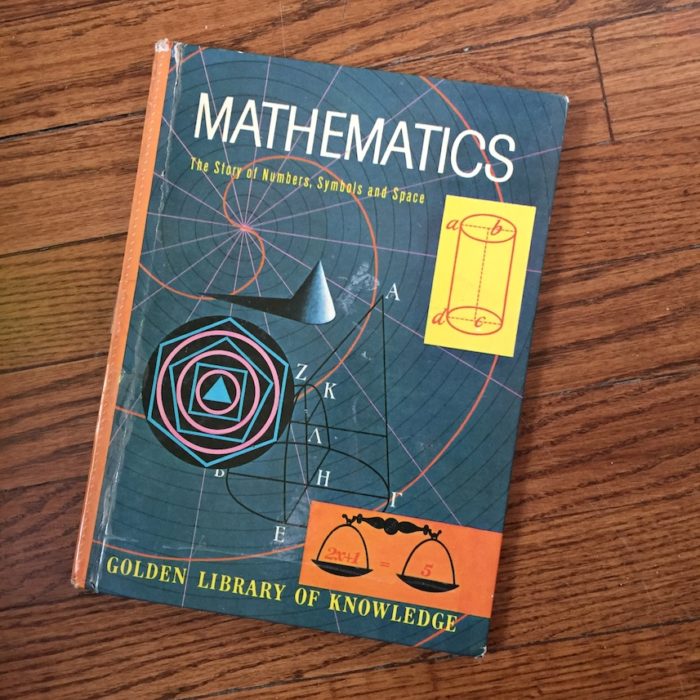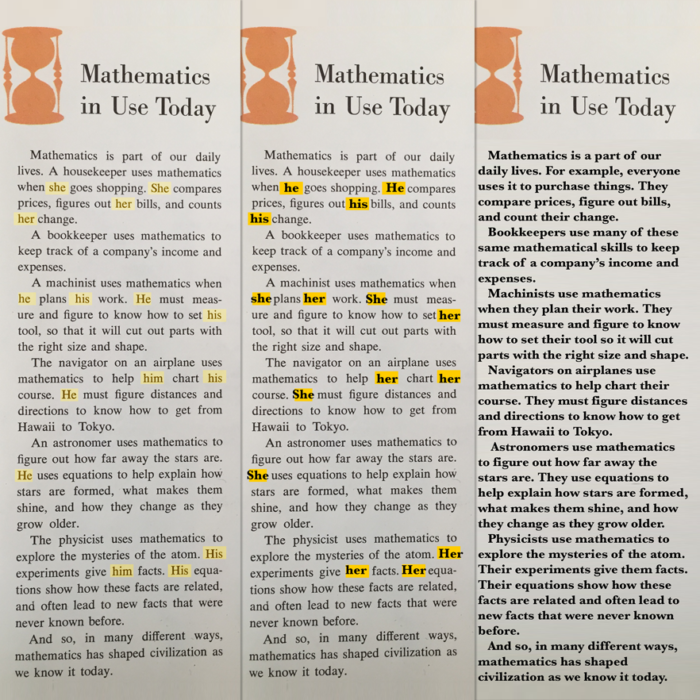
I pulled the 1960s Golden Library of Knowledge on Mathematics off a shelf at the Green Gypsy Thrift Shop because I wanted a bird’s-eye view of the subject. Surely, a survey written for 8-year-olds would present an uncluttered picture. And it did—until I came upon its conclusion.
According to the pronoun allocations appearing here and nowhere else in the book, “shes” use math in the service of the household. While shopping, “shes” may compare prices, reconcile bills, and count change. They might even engage in the apparent gender-neutral service of bookkeeping. Conversely, “hes” use math to further their individualistic ambitions as machinists, navigators, pilots, astronomers, or physicists.
The sudden gender imposition was so jarring I inverted the “hes” and “shes” to see how the conclusion read when only the vagina’d used math outside of service. The result recalled this question often posed to RGB: “When will there be enough women on the Supreme Court?” To which she responded, “when there are nine…there’d been nine men, and nobody’s ever raised a question about that.” Her riposte, like my exercise, stirs a wry smile but it does not satisfy.
No, the solution to the potential-inhibiting power of pronouns is not in its opposite. It is possible—and frankly produces better writing—to bypass gender pronouns altogether when writing about capabilities. In exercising this kindness, writers leave all possibilities related to a skill open to whoever wants or needs to use it regardless of their plumbing.
I might rework the same conclusion to read something like this :
Mathematics is a part of our daily lives. For example, everyone uses it to purchase things. They compare prices, figure out their bills, and count their change.
Bookkeepers use many of these same mathematical skills to keep track of a company’s income and expenses.
Machinists use mathematics when they plan their work. They must measure and figure to know how to set their tool so it will cut parts with the right size and shape.
Navigators on airplanes use mathematics to help chart their course. They must figure distances and directions to know how to get from Hawaii to Tokyo.
Astronomers use mathematics to figure out how far away the stars are. They use equations to help explain how stars are formed, what makes them shine, and how they change as they grow older.
Physicists use mathematics to explore the mysteries of the atom. Their experiments give them facts. Their equations show how these facts are related and often lead to new facts that were never known before.
And so, in many different ways, mathematics has shaped civilization as we know it today.
